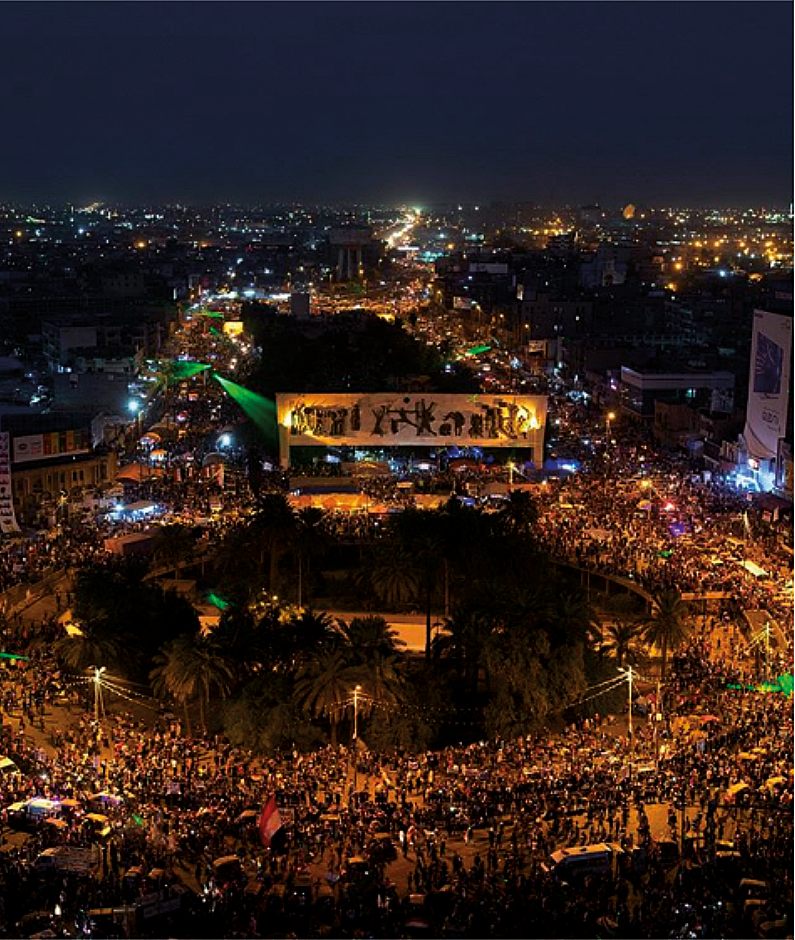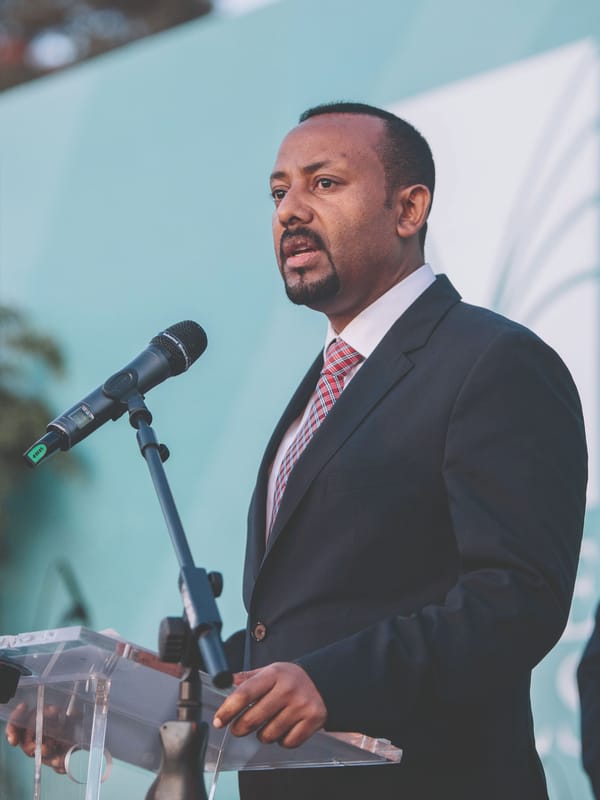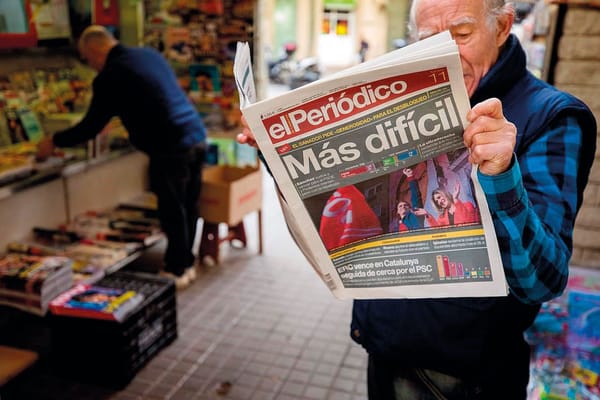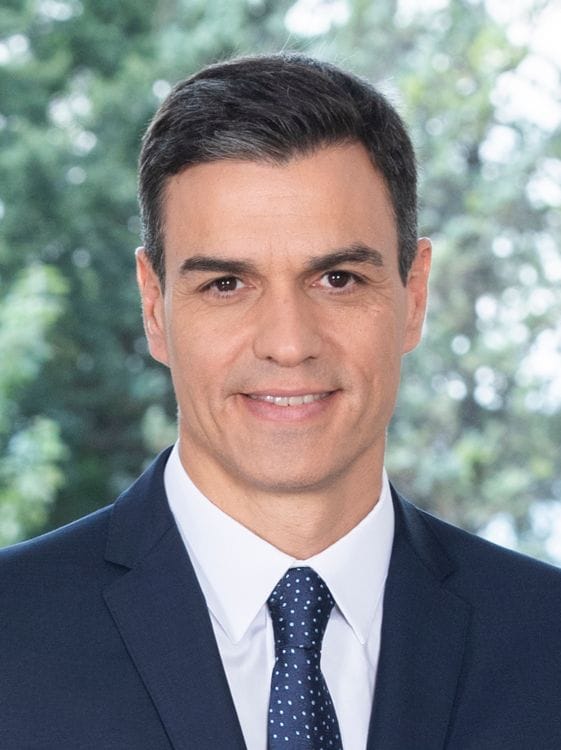The Anger of an Exhausted Iraqi Youth Against a 16-year Old Corruptible Political System
Following almost two decades of war, inequality and corruption, Iraqi youth are taking to the streets to voice their anger

Thousands of Iraqi youngsters, from central and southern cities and from all religious groups, have been taking the streets since October 1st against the worsening economic conditions, the divisive government policies, and widespread corruption that afflicts Iraq. The government has reacted viciously to the protests – even by the standards of the Middle East. Security forces have fired rubber bullets, live ammunition, and tear gas at the raging crowd who were armed with nothing but the Iraqi flag. Snipers were deployed atop tall buildings to threaten and frighten the protestors.
The insurgents occupied all floors of an empty, six-story Turkish restaurant standing opposite to Tahrir Square. Both the building and Tahrir Square have become the symbols and fortresses of this protest. Their main demands were for snipers to be withdrawn, the political cabinet to be restructured, and unemployment and corruption to be fought. In response, the government threatened to dismiss any governmental employee who participated in the protests and issued a city-wide curfew. This only led the protests to grow, and on October 25th, the riots spread to other provinces of the country, this time the demand was the abolishment of the entire political system.
The rage of the demonstrators has been directed at high unemployment levels and the practice of assigning governmental posts based on partisan loyalties and ethnic affiliations rather than credentials and qualifications. The ruling elite are accused of misusing funds, poorly managing state resources, and failing to meet even the most basic needs of the Iraqi people – jobs and basic public services.
Outrage is also directed at the political system enforced upon them by the Americans following the 2003 invasion and overthrowal of dictator Saddam Hussein. Since the downfall of Hussein, the influence of religious figures and politicians from the neighbouring country Iran have grown markedly in Iraq. Iranian-backed militias roam around the country, like mafia-esque extortion groups, causing unrelenting anxiety for Iraqi citizens. Furthermore, many Iraqi politicians and militias have become loyal to Iran, submitting the country’s government to Iran’s bidding, whilst Iraqis, despite the country’s vast oil reserves, have neither medical care, safety, nor good education.

The Iraqi people’s anger at Iran’s increasing authority is understandable, though corruption in Iraq cannot be solely blamed on the Tehran regime. This protest is larger than that – it represents a fight by the restless masses of a younger generation of Iraqis who are tired; having witnessed countless wars, from the 2003 invasion, to the civil war in 2006 and ISIS in 2014. They are struggling to scratch out a living and are entirely rejecting their corrupt government.
This is an unprecedented situation for the Iraqi government. Because compared to previous conflicts in Iraq, now it is largely Shia’s who are facing each other. Anyone who thinks of clashes in Iraq solely a result of a conflict between Sunnis and Shia’s may find that strange.
And it is not the first time that Shia’s have clashed with Shia’s. Saddam Hussain was at an 8-year long war with Shi’ite Iran, but two-thirds of his army consisted of Shia’s – peasants, poor Iraqis from the south, a few Kurds – while the senior officers and generals were mostly Sunnis. When the Shia’ majority in Iraq came to power following the fall of Saddam, the Shia’ south was the government’s mainstay. Hundreds of young men from cities like Basra and Nasiriyah lost their lives fighting ISIS.
But once ISIS was defeated, the contradictions came to light. Many young men returning from the war were shocked to realise how great the social injustice among the Shia’ was. When a government delegation visited Nasiriyah, the demonstrators complained that little had changed for the people since Saddam. At that time, the Shia’ of Nasiriyah had been suppressed, today they suffered again hardship, while the party elites enjoyed all the benefits of gaining power and the victory of terror.
The young people can no longer be put off with solemn religious words previously used by the government to rule the country. This was the case in 2006 and 2014, which both led to infamous civil wars that ended in bloodshed. One of the first slogans of the uprising was “The thieves robbed us in the name of religion”. This is reflected by the presence of Shia’s, Sunnis, Christians and Yezidis on the streets of Baghdad today; united in their hatred towards the government and the earnest feeling that they see no future in their country. And for that they blame the corrupt state apparatus in Iraq.
The protest has reached its 32nd day. It is yet unknown how long it will last and if it will be fruitful. But one thing is clear, the way the government has been dealing with the insurgents will not certify an end to the demonstrations. The people will not just leave the streets and go home because they are aware that once they have withdrawn, nothing will change.








